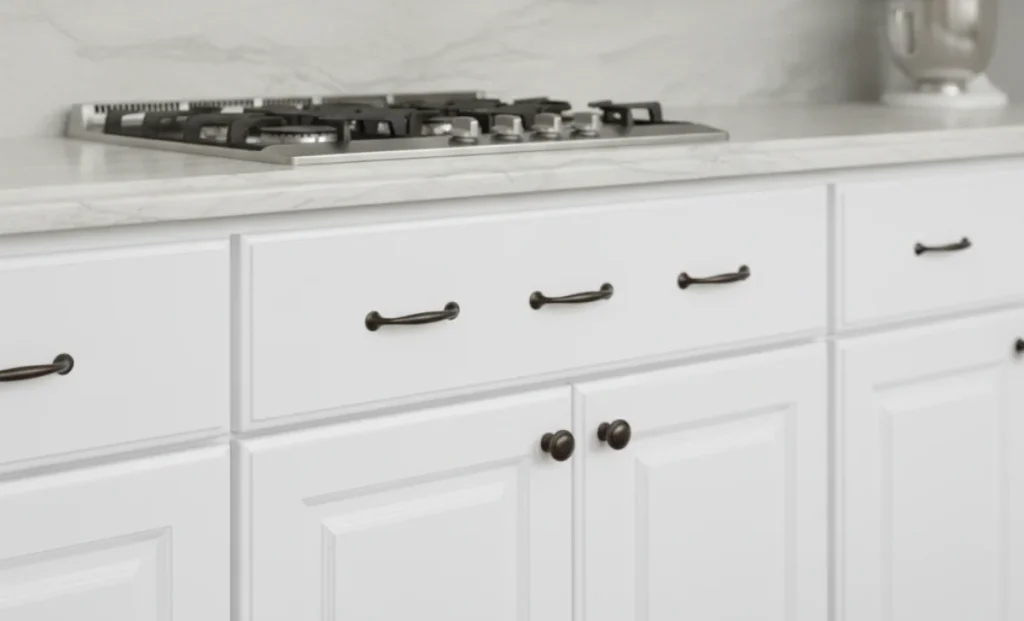Choosing Bronze: A Designer’s Guide to Enduring Hardware Details

For architects and interior designers, hardware is more than a finishing touch. It is a statement of permanence, material integrity, and design clarity.
Bronze, with its rich patina and timeless character, remains a material of choice for those who seek both functionality and artistry in their work. Among these choices, the cane bolt stands out, an elegant, purposeful element that complements both traditional and contemporary spaces.
The Appeal of Bronze in Architectural Design
Bronze offers more than aesthetic value. It fights germs naturally, lasts long, and resists rust, which makes it perfect for indoor and outdoor use. Over time, bronze develops a unique patina that reflects its environment, a living finish that evolves, telling the story of the space it inhabits.
Designers favor bronze for its versatility. Whether integrated into rustic mountain retreats or sleek urban residences, bronze adapts, enhancing its surroundings with a sense of depth and authenticity. Its tactile warmth and visual depth make it a preferred material for fixtures that contribute to a cohesive, elevated interior narrative.
In high-end design, the integrity of materials matters. Bronze, unlike plated alternatives, is solid through and through. This authenticity speaks to a growing demand for quality in an age of mass production, where materials are chosen not only for their function but for their ability to convey lasting value.
Selecting Hardware That Enhances the Space
Thoughtful hardware choices can elevate a project. In particular, specifying handcrafted elements ensures that no detail feels generic or mass produced. This attention to detail signals intentionality and craftsmanship, qualities increasingly valued in both residential and hospitality design.
When selecting pieces like a cane bolt, function should never be isolated from form. A well-designed bolt must secure without distraction. It ought to fit within the overall design story as a unified piece instead of a distracting feature.
Furthermore, designers must consider the ergonomics and daily interaction of hardware. A cane bolt that feels substantial in the hand, operates smoothly, and aligns visually with surrounding materials becomes part of a seamless user experience. These small interactions reinforce the overarching design language of a space.
The Role of Hardware in Legacy Projects
For restoration or heritage builds, bronze hardware aligns with both historical context and modern performance expectations. Pieces such as cane bolts, door handles, and window latches act as tactile links between past and present.
Design professionals working on legacy projects often specify bronze for its ability to match aged finishes or contribute to a consistent palette across interiors. Its adaptability and graceful aging make it ideal for work where permanence is paramount.
Historic homes often come with constraints, existing materials, structural limitations, or preserved features that must be honored. In these contexts, hardware becomes a subtle but crucial tool for designers seeking harmony between the old and the new. Bronze, with its understated elegance, provides a solution that respects heritage while delivering modern functionality.
Customization and the Luxury of Specificity
One of bronze’s advantages is the ability to tailor it to a project’s needs. From patina options to custom sizing, working with manufacturers that support designer input opens the door to true personalization.
This level of specificity is not about extravagance, it is about alignment. Ensuring that even the smallest elements reflect the overall design language contributes to a space that feels considered and complete.
For example, coordinating the finish of a cane bolt with surrounding metalwork or integrating it into bespoke millwork can reinforce design cohesion. Clients who invest in high-end interiors expect this level of consideration, and the hardware should meet that expectation.
More than ever, design professionals are being called upon to create environments that express identity and purpose. Custom bronze hardware supports this demand by allowing material, form, and finish to reflect the story being told within the space.
Material Choices that Last
Designers and architects make countless decisions that shape the built environment. When durability, beauty, and meaning converge, bronze hardware emerges as a natural choice. It speaks quietly of quality, of spaces meant to last.
In specifying elements like a cane bolt, professionals are not merely choosing hardware. They are choosing to articulate a vision through every detail, ensuring that each touchpoint in the home reflects the same standard of care and excellence.
Ultimately, what makes a space special isn’t just its appearance but the emotions it creates. Bronze, with its timeless strength and evolving beauty, provides a foundation for this subtle yet powerful impact. As the design world continues to seek authenticity and narrative in the built environment, bronze hardware remains a small but vital contributor to that vision.

